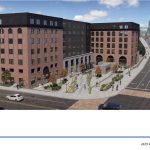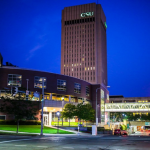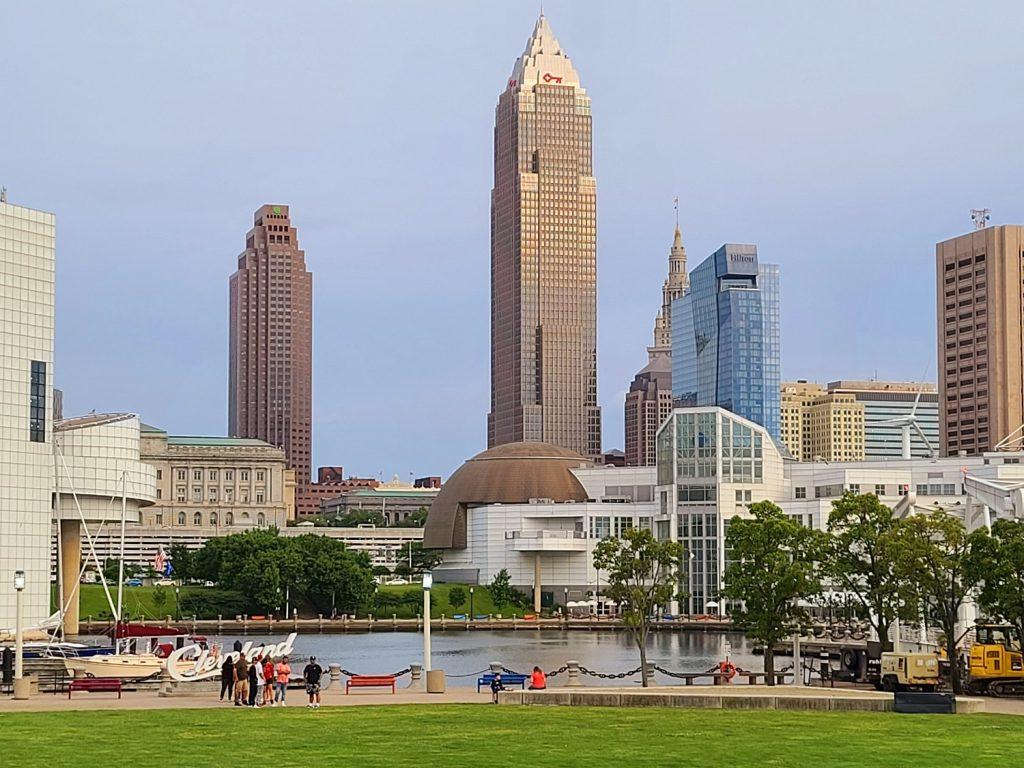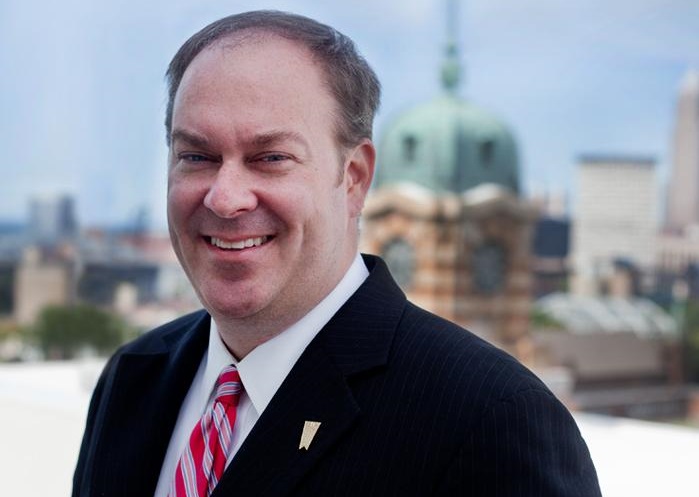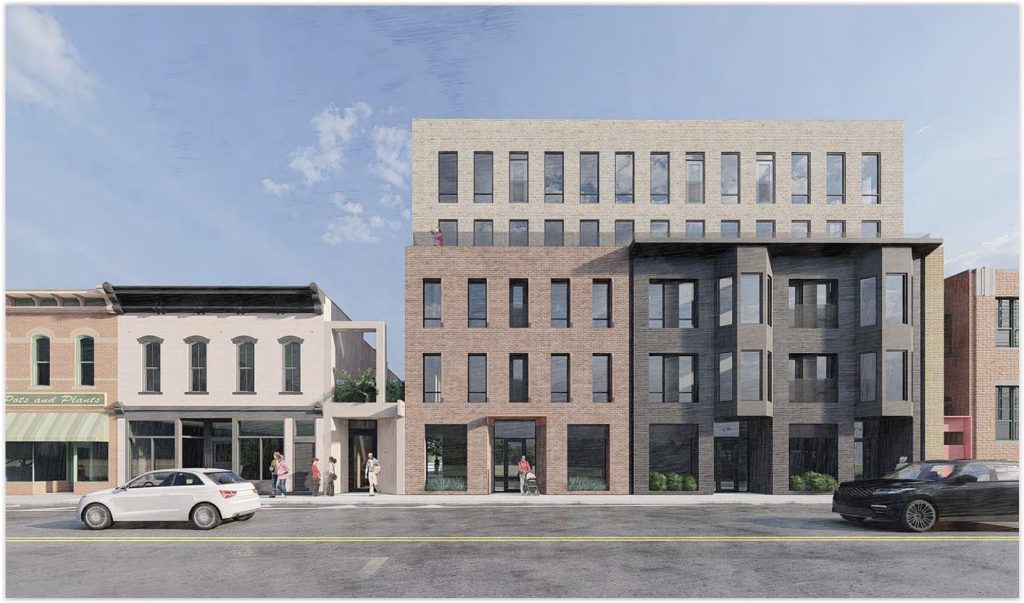One of the hallmarks of the Hingetown section of Cleveland’s Ohio City neighborhood is that it is a place where new ideas and businesses can gain a foothold. When entrepreneur Graham Veysey and his wife Marika Shioiri-Clark, a social impact designer, set out to invest in then-rundown Hingetown a decade ago, they started by creating and inviting new businesses.
Finding new ways to foster creativity requires its own inspiration and embracing of new ideas. Their latest brainchild, the Longhouses of Hingetown, was inspired by a new development in Detroit, a project called True North.
On the northwest corner of Church Avenue and West 28th Street, the Longhouses of Hingetown is proposed to be a community of Quonset huts like True North. Unlike True North, which has 10 Quonset huts set like a remote outpost on a urban prairie on 16th Avenue near Grand River Avenue, the Longhouses would be shoe-horned into one of the few remaining undeveloped slices of land in booming Hingetown.
Each Quonset hut, or Longhouse, could be an individual interior space as small as 640 to 960 square feet or as large as 738 to 1,472 square feet — roughly the size of a two- or three-bedroom apartment. That depends on if the tenant adds a maximum-sized mezzanine inside the hut.
The seven Longhouses would be set on one-fourth of an acre and centered around a grassy courtyard. Each hut would be built with a small living space and/or a studio, workshop or display area. Veysey doesn’t like calling them live-work spaces, however.
“They’re creative spaces,” he said. “They could be a living space or a work space or both. They’re not quite a business incubator. They can be more for the visual arts if that’s what someone wants.”
Veysey hopes to start construction this fall with the Longhouses ready for move-in at the end of the year. The seven basic shells are estimated to cost a total of $600,000, according to documents filed with the city’s Building Department. That cost includes a ground-floor kitchen and restroom in each hut but doesn’t include the addition of a mezzanine or other personalized interior features.
City approvals have yet to be granted for the development. Veysey says no tenants have been identified because the Longhouses haven’t been marketed yet. So no rent estimates are available.
 |
| The kinds of Quonset huts that are proposed for Hingetown can come in different sizes. Some are tall enough for mezzanines to be built into them while others are too short for them (Curbed). |
“We’re going to be pretty aggressive with the price per square foot,” he said. “Rents will be determined once we get our certificate of occupancy as we’re hoping to pass along the efficiencies of buildings directly to future occupants.”
Interested parties should contact Veysey’s and his wife’s company at info@hingetown.com. The project also involves a facade renovation of the 1865-built Schaefer Building on the southwest corner of Detroit Avenue and West 28th.
“We’re going to open that up to make it more inviting,” Veysey said. “Michela Picchi’s ‘Flying Tiger’ mural on the West 28th side of the building will be preserved.”
Decades ago, the roughly 6,500-square-foot building was closed off and turned into a bunker whose biggest windows were made of glass block. That was when the neighborhood was known more for drug dealers and prostitutes and less for young professionals and gourmet coffee.
 |
| The Schaefer Building, at left in the top elevation, will have its facade opened up with a glassy storefront or two as part of the Longhouses development (Cleveland Draw). |
Since Schaefer Printing relocated to Lakewood, its building will be turned into one or two storefronts. These retail spaces, the Longhouses and the 20,000 square feet of new retail spaces in the Church+State development are indicative of Veysey’s confidence that the retail, restaurant, gallery and small-business sector will bounce back from the COVID-19 crisis that shut Ohio down in mid-March.
“The (small business) neighbors that we’ve been lucky to be involved with are all pivoting in this unique time to address a consumer interest,” Veysey said. “Mid-March was the key time to convert people from prospects to tenants. It doesn’t feel as firmly pressed down now. So we’re having serious conversations (with potential tenants).”
Although he would not identify any potential retail tenants for the $60 million Church+State development next door, Veysey said that residential leasing activity is healthy for the 158 apartments. The six-story Church building is 50 percent leased with the first residents moving in June 19.
Residential move-in date for the larger, 11-story State building is tentatively scheduled for late August, thus leasing is farther behind for that building. The public atrium between the two buildings called Church+State Way will open to the public in the middle of July, Veysey said.
Church+State is a partnership among Grammar Properties, Hemingway Development of Cleveland, Cedar Street Development of Chicago and Turner Construction.
That project is located near the intersection of Church and West 29th Street. West 29th was State Street before 1906 when Cleveland’s north-south streets were given numerical names. Grammar Properties is a partnership between Veysey and his wife.
The 11-story State is the tallest building built in Ohio City since the 19-story Lakeview Tower, 2700 Washington Ave., was built in 1973. It is on the other side of the West Shoreway from Church + State. The 15-story Riverview Tower, 1795 West 25th, was built in 1964.
Tyler Kapusta contributed to this article.
- Ohio City housing emerging south of tracks
- Cleveland maritime sector is big business
- Bridgeworks gets green light from Landmarks
- Haslam email preempts City, County at stadium debate
- NE Ohio projects get historic wins from tax credits
- Haslams announce Brook Park stadium-area development partner, updated plans





